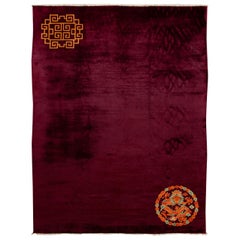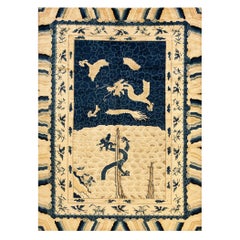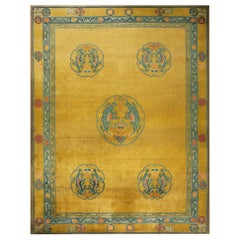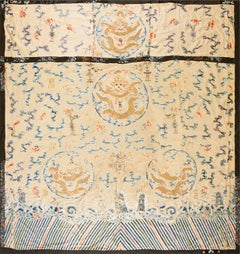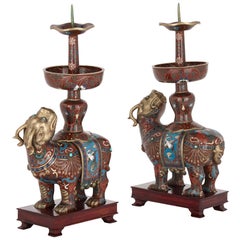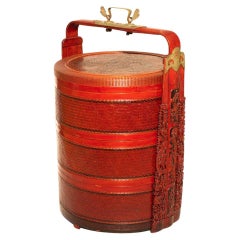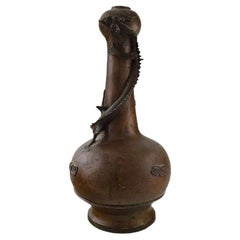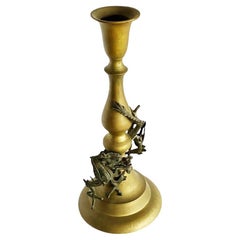Antique Chinese Dragons
Early 20th Century Chinese Art Deco Antique Chinese Dragons
Wool
1920s Chinese Antique Chinese Dragons
Wool
1920s Chinese Antique Chinese Dragons
Wool
19th Century Antique Chinese Dragons
Bronze
1820s Chinese Antique Chinese Dragons
Silk
Early 20th Century Chinese Antique Chinese Dragons
Enamel
19th Century Chinese Qing Antique Chinese Dragons
Bamboo
Late 19th Century Chinese Chinese Export Antique Chinese Dragons
Bronze
1920s Antique Chinese Dragons
Brass
Early 1900s Chinese Antique Chinese Dragons
Ceramic
Late 19th Century Chinese Chinoiserie Antique Chinese Dragons
Wool, Cotton
Early 20th Century Chinese Chinoiserie Antique Chinese Dragons
Cotton, Wool
19th Century European Antique Chinese Dragons
Metal, Bronze
1840s Chinese Antique Chinese Dragons
Silk
Early 1800s Chinese Export Antique Chinese Dragons
Porcelain
Early 19th Century English Chinoiserie Antique Chinese Dragons
Ironstone
19th Century Chinese Antique Chinese Dragons
Porcelain
19th Century English Chinoiserie Antique Chinese Dragons
Ironstone
Late 19th Century English Chinoiserie Antique Chinese Dragons
Ironstone
Late 19th Century English Chinoiserie Antique Chinese Dragons
Ironstone
Late 19th Century Antique Chinese Dragons
Glass, Cut Glass
1890s Chinese Antique Chinese Dragons
Wool
1910s Chinese Antique Chinese Dragons
Silk
1880s Chinese Chinese Export Antique Chinese Dragons
Hardwood
Early 20th Century Chinese Qing Antique Chinese Dragons
Hardwood
19th Century Chinese Other Antique Chinese Dragons
Wool
1890s Chinese Qing Antique Chinese Dragons
Silk
Early 20th Century Chinese Qing Antique Chinese Dragons
Hardwood
19th Century Qing Antique Chinese Dragons
Ceramic, Glaze
Early 1900s Chinese Chinese Chippendale Antique Chinese Dragons
Wool
1920s Chinese Chinese Export Antique Chinese Dragons
Wool
Early 19th Century English Georgian Antique Chinese Dragons
Pottery, Ironstone
Late 19th Century Chinese Qing Antique Chinese Dragons
Hardwood
Early 20th Century Chinese Antique Chinese Dragons
Brass, Enamel
Early 20th Century Chinese Antique Chinese Dragons
Wool
Late 19th Century Chinese Art Deco Antique Chinese Dragons
Wool
1920s Chinese Antique Chinese Dragons
Wool
19th Century Chinese Chinese Export Antique Chinese Dragons
Wood
1880s Chinese Chinese Export Antique Chinese Dragons
Hardwood
Early 20th Century Chinese Qing Antique Chinese Dragons
Hardwood
19th Century Antique Chinese Dragons
Hardwood
1920s Chinese Chinese Export Antique Chinese Dragons
Hardwood
1920s Chinese Qing Antique Chinese Dragons
Porcelain
19th Century Chinese Qing Antique Chinese Dragons
Porcelain
Early 20th Century Chinese Art Deco Antique Chinese Dragons
Wool
Late 19th Century Chinese Chinese Export Antique Chinese Dragons
Copper
Early 1900s Chinese Qing Antique Chinese Dragons
Porcelain
Early 19th Century English Chinoiserie Antique Chinese Dragons
Ironstone
1880s Chinese Chinoiserie Antique Chinese Dragons
Silk
Mid-19th Century Chinese Qing Antique Chinese Dragons
Marble
18th Century Chinese Other Antique Chinese Dragons
Silk
Late 19th Century Antique Chinese Dragons
Paper
Early 1900s Chinese Antique Chinese Dragons
Metallic Thread
19th Century Chinese Antique Chinese Dragons
Wool
19th Century Chinese Chinese Export Antique Chinese Dragons
Ceramic
19th Century Chinese Other Antique Chinese Dragons
Cotton
19th Century Antique Chinese Dragons
Wood
Early 20th Century Chinese Art Deco Antique Chinese Dragons
Wool
Late 19th Century Chinese Antique Chinese Dragons
Wool
Late 19th Century Chinese Other Antique Chinese Dragons
Wool
- 1
- ...
Antique Chinese Dragons For Sale on 1stDibs
How Much are Antique Chinese Dragons?
- What does a Chinese dragon mean?1 Answer1stDibs ExpertFebruary 22, 2021A Chinese dragon, in Chinese culture, represents luck, strength, and health. Due to these associations, the dragon has become the symbol of imperial power and authority.
- 1stDibs ExpertApril 5, 2022A Chinese vase with a dragon typically means good fortune and prosperity. Throughout East Asia, the dragon is a symbol of luck. In China, the mythical beast is a common motif used in the designs of pottery, furniture and art. On 1stDibs, find a range of Chinese vases.
- 1stDibs ExpertNovember 4, 2024To identify antique Chinese furniture, look carefully at its details. Chinese craftsmen often built furniture using mortise and tenon joinery, eliminating the need for nails and screws. If you see this type of hardware, your piece is likely not at least 100 years old, especially if the hardware still looks new and shiny. Since antique furniture was handmade, you will normally see slight imperfections, such as tool marks or slight variations in carvings. Pieces that appear completely uniform and pristine are less often genuine antiques.
When present, maker's marks can also be helpful. Research the marks to learn more about when the maker was active and producing pieces like yours. Alternatively, you can have a certified appraiser or experienced antique dealer evaluate your furniture for you.
Shop an assortment of antique Chinese furniture.  PAGODA REDOctober 7, 2020
PAGODA REDOctober 7, 2020To determine the age of a Chinese furniture piece, look carefully at the joinery and finish. Natural expansion and contraction of the wood over time will cause a joint to protrude or retract, distorting a once-seamless fit. Antique lacquer finishes become crackled and worn over time. Areas of exposed wood, such as the underside of a table, the footrest of a chair, or the back of a cabinet should appear raw and dry compared to the finished surface. With use, the legs of tables and chairs become weathered near the bottom from precipitation and use.
 Lotus GallerySeptember 23, 2020
Lotus GallerySeptember 23, 2020The best way to know is to take it to an expert, such as an appraiser, reputable dealer or auction house, or museum
